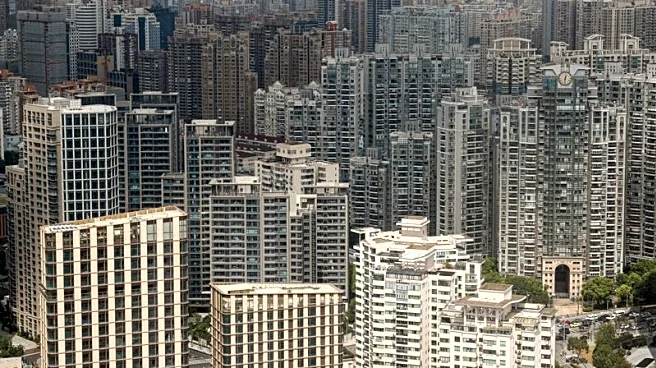What's Happening?
Recent studies indicate a shift in China's urbanization patterns from concentrated urban cores to decentralized hubs. Between 2000 and 2020, higher-ranked cities experienced initial dispersion around urban cores followed
by concentration in outer regions. This trend was evident in Rank 1-2 cities from 2000 to 2010 and extended to Rank 3 cities during 2010-2020. The population change within specific radii of cities reveals how city growth patterns have evolved over two decades. A decrease in population coverage within the same radius suggests relative dispersion, while an increase indicates relative concentration. Higher-ranked cities have reached high levels of urbanization, making further concentration in urban core areas challenging. Instead, their outer regions often experience development surges as businesses and services spread from the congested core, creating decentralized hubs that attract a larger share of the population.
Why It's Important?
The shift towards decentralized urban hubs in China reflects broader global urbanization trends, impacting economic and social structures. This decentralization can lead to more balanced regional development, reducing pressure on urban cores and potentially improving living conditions by distributing resources more evenly. For U.S. stakeholders, understanding these trends can inform urban planning and policy decisions, especially in cities facing similar congestion issues. The move towards polycentric urban forms may also influence global economic dynamics, as businesses and services adapt to new spatial distributions, potentially affecting international trade and investment patterns.
What's Next?
As China's urbanization continues to evolve, further studies and monitoring will be necessary to understand the long-term impacts of these trends. Urban planners and policymakers may focus on enhancing infrastructure and services in decentralized hubs to support growing populations. Additionally, there may be increased emphasis on sustainable development practices to manage the environmental impacts of urban sprawl. For international observers, these developments could offer insights into managing urban growth and congestion in other rapidly urbanizing regions.
Beyond the Headlines
The shift towards decentralized urban hubs in China may have deeper implications for social and cultural dynamics. As populations move away from traditional urban centers, there could be changes in community structures and cultural practices. Additionally, the redistribution of populations may affect political representation and resource allocation, potentially leading to shifts in governance and policy priorities. Understanding these nuances is crucial for comprehensively addressing the challenges and opportunities presented by urbanization.












